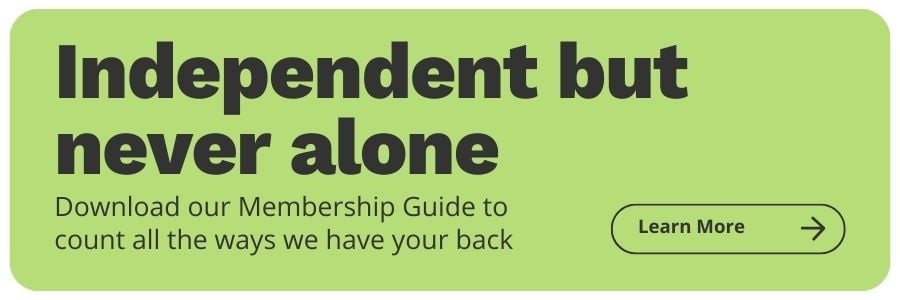The 4 Most Important Pages on an RIA Website and Tips to Maximize Each
Share this
Websites are important. In fact, a whopping 98% of consumers say a firm’s website is an important factor when choosing their financial advisor, according to a recent eMoney survey.
When I saw this nearly-100% statistic, I wasn’t surprised. This number simply quantifies an anecdote I’ve seen for nearly six years as the Marketing Coach at XY Planning Network. Websites matter. Firms with great websites are more likely to be doing well with their marketing, and firms who invest in their website development are more likely to be satisfied with its ability to bring in leads. But what makes a website great? And what pages do consumers truly care about?
When you work with an experienced website pro, you typically get the fast-track to building a strong site. Unfortunately, many firms still manage the website on their own. This is often due to budget constraints or not knowing your marketing budget, but the truth of the matter is website creation is a tall order for small business owners. Websites are big projects requiring various specialty skills and loads of time.
I always recommend advisory firms get professional help with their website, but I’m also a realist. If you’re trying to improve your website, I’m here to empower you with direct insights into what really matters and how to do better. And if you’re working with a pro, this article can help you identify top priorities for their work, as well as some best practices to look for.
The four most important pages
There are four main pages a consumer looks at on an RIA website. I conducted a study of XYPN member websites and found that the most-viewed pages are:
- Homepage
- About page
- A single blog post
- Services page
It’s no surprise that the homepage is at the top of this list, but I was interested to see that both the about page and a popular blog post you wrote could very well be getting more traffic than the services page.
Why is that? I wondered. One hypothesis is that consumers like to browse around a website and get to know an advisor before hearing about the services you offer. They care about the human more than the sale. So, after looking at the homepage, some consumers will like what they see and be interested enough to see who you are. They navigate to the about page. From there, they’ll read about you and the firm, then a portion of those consumers will want to hear what you have to say (on the blog). Lastly, the smallest portion of people move on to the services page.
Regardless of the exact story behind the data, I would give you this takeaway: this is the order in which you should emphasize any website improvements. Spend time making sure your homepage is doing well, then move on to the About page, your popular blog posts, and then Services. You’ll know a page is “doing well,” and you can move on when views remain high and engagement metrics (such as bounce rate, time on page, exit rate) are strong. Learning more about your website’s Google Analytics reports is useful here.
Industry-specific tips for maximizing each page
Now that we know the order of page popularity, it’s natural to wonder how we can improve these most-viewed pages.
Website recommendations are always better when they’re based on your unique situation. The improvements I’d recommend to you would differ from the improvements I’d suggest for the next advisor reading this post. There are too many variables in advisor marketing to say one tip would work for every firm, advisor, brand, niche, and goals.
However, there are also some best practices every RIA should consider. Since this is a blog post and not a private coaching session, let’s start with those!
An RIA homepage
Your website’s homepage has multiple key roles to play. First and foremost, please use this page to affirm your unique specialty, and do so very clearly. When a consumer hits your website, they want to know what makes you great. Don’t hide the core of your pitch deep in the third paragraph or (even worse) on your Services page. Clearly set the tone for the brand and website with confident, specific statements about what makes you different. The main headline is a key place to apply this best practice.
Next, offer an overview of the key areas of your website. Tell me, the viewer, what else I can see on your site, and point me there with hyperlinked texts or attractive buttons. This overview approach will likely happen on the bottom half of your homepage and is a useful best practice to follow. Think about it: if you’ve captured the visitor's interest with those compelling statements about what makes you unique and great, they’re going to want to keep browsing. Be their guide and offer suggestions for what to do next. A nice idea here is to use the information we covered earlier in this post! We know consumers like to look at the About page, your best blog posts, and an overview of the Services, so invite them to go there.
One more for today: captivate the right eyes by mentioning your styles or philosophies as a firm on the homepage. You are selling a service, and service-based businesses are heavily dependent on a feeling of a “match” between you and your prospective clients.
The best way I can describe this quickly is with a dating app analogy. Dating profiles are brief like a website homepage but can still create an overall impression about what you’re like as a firm. Are you organized? Detail-oriented? Supportive? Heavy user of spreadsheets? These things matter when a consumer is trying to gauge whether you’re a potential fit for the relationship they’re looking for. To start playing with this side of your message, add a section to the homepage to share a few sentences about “Our Planning Style,” “Firm Philosophies,” or similar.
Your about page
The first thing I look for on an RIA’s About page is recent, realistic imagery of the planner(s) who make up the firm. More often than not, the about pages in our industry lack meaningful human connection. The page either has zero photos of the planner(s), or the photos are neither recent nor realistic. As a service provider, part of what you’re selling is yourself. A prospective client will be seeing you a lot if they sign on, so it’s important to start building some trust and connection now.
Look at your about page, and be critical about the status of the photos you offer there. Are the photos more than two years old? Are you posing naturally, and wearing an outfit that reflects how you’d look while meeting with clients? If needed, take new photos of yourself, and perhaps even consider adding a collage of photos from your phone’s camera roll. That’s a sure-fire way to get a genuine, realistic picture!
Next, I read the words on the page. Your website’s about page is the place to give the public a look inside the firm. What are you about? What do you believe in, and what does the firm stand for? Tell them about the people involved, and the firm, too. There’s no secret way to say the perfect thing, so don’t stress. Instead, consider what your ideal prospect avatar would love to know and share that. Be genuine by writing from the heart (a.k.a. what feels true to you) and resist the urge for perfection. Of all places on the site, your about page is the place to relax and just be yourself.
Lastly, be sure your about page has a section or two that elaborates on relevant things you stated on the homepage. The best-fit prospects will be feeling intrigued by what you said regarding the firm’s philosophies, style, and what makes you different, so share more about those things. Your about page is the appropriate website real estate for that kind of detail.
Blog post pages
If your website contains an active blog section, popular posts are likely among the top-viewed pages on your site overall. If you don’t have a blog, however, this type of insight shouldn’t be the sole reason to start one now. After all, blogs can be a great tool for digital content marketing, but they’re not necessary for every audience or every advisor. We can talk about that in another article if you’d like :)—tweet me!
The first thing I’d suggest to maximize popular blog posts is to reimagine what a reader would do after reading the post. Let’s say your most popular blog article got 3,000 views last month. What did all of those people do next? Did most of them leave the site? Did a good portion of them stay and explore more of your content? It’s your responsibility to guide interested viewers toward things they would naturally want to do next. Make the browsing experience more seamless by adding intentional CTAs to your blog post pages, and please think beyond the typical “Book a free consultation!” call-outs.
More thoughtful examples of blog CTAs can include: “Meet the author” (linking to your about page), “More on this topic” (linking to related articles they may also enjoy), “Get help doing this in 2022” (linking to your Services page), and “See the concept in action” (linking to a webinar recording or video you created that demonstrates your skills working through the topic).
Another recommendation I often make is to display advertisements for your firm on your blog posts. People pay big bucks to get their ads featured across the internet. If you own your blog, you can place your own “banner ads” on the page, and get traction for free. Banner ads can advertise an upcoming event you’re hosting, a free download you have, your one-time financial plan, a big piece of press you got, or any marketing asset. This is a clever idea that is natural for the reader. We’re used to seeing banner ads on articles. While this tip is similar to the CTA recommendation above, there is a distinct difference. Here, you’re not hyperlinking to the next thing they can do; you’re displaying actual banner ads. To get started, hire a graphic designer to create a set of banner ads for you or DIY using these digital ad templates from Canva.
Your services page
If you do nothing else to maximize your services page in the next year, at least make sure you’re displaying your fees. Why? The advisor website benchmarking study found that, on average, firms that display their fees on the website report twice the conversion rate (visitor to prospect) of those that do not. If you’ve chosen to not display your fees for a particular reason or fear, take time to explore that and come up with ways to combat the issue.
For instance, if you’re hesitant to display your fees before initial consultations, ask yourself why. Oftentimes, this is a signal that you aren’t confident that your current marketing explains your service’s value effectively. This is a fear that usually fades after messaging improvements, so don’t let it hold you back from the benefits of transparent fees posted on an RIA website.
Another tip to maximize your services page is to offer a visual. As a financial planner, you are selling something that’s invisible. You’re selling an experience, your knowledge, more-positive emotions for your client, and the possibility of future financial benefits, to name a few. Making the invisible more visible will benefit your marketing conversions. First, consider the elements of working with you that can be displayed in a visual format. Brainstorm all of the ideas you can, and then consider which of your ideas would be most intriguing to your ideal client avatar. Hire a graphic designer to create these visual elements, or DIY them using your website platform, presentation software like PowerPoint, or a beginner-friendly design platform such as Canva.
Finally, glance at your services page and ask, “Are my services uniquely packaged to intrigue my niche?” Most often, financial planning packages are created and described from the financial planner’s mindset, not the mindset of our clients. In marketing, we step into the shoes of our buyer. How could the same service be described in a way that’d be more intriguing for them?
Typically, many RIAs use industry-standard titles such as “Comprehensive Planning” or “Ongoing Planning” to outline their services and leave it there. While this is a fine place to start a brainstorm, you're not maximizing your marketing and services page if you use generic titles. Instead, challenge yourself to rethink the packaging. How else could you name and describe your services? What language would my ideal client love to see? A strong place to start is asking some of your current clients to describe the service they get from you as if they were speaking to a friend. Tune in to what they highlight about the experience and any unique phrases they use.
Homework
That was a jam-packed piece! My hope is you choose a few of these maximization tips, and apply them. Action is more valuable than perfection, and there’s no need to feel guilty if most of your RIA’s website needs work. The truth is that websites are an ever-evolving artform; they’re never “perfect” or “ done.” A healthy approach to any website is to create it strategically, learn from the visitors that come, and make intentional updates over time. You’ve got this!
Bonus resources to optimize your RIA website:
- A Guide to Google Analytics: What's Normal Anyway?
- Four (Doable) Ways to Dramatically Improve Your RIA's Website
- Ten Advisor Websites That Stand Out From the Crowd
- 9 Experiments to Try When Marketing Your RIA
- 10 Must-Haves for Your RIA Website
- A Realistic Approach to SEO for Independent Financial Advisors
Craving 1:1 guidance when it comes to your RIA’s marketing? We get it—who wouldn’t be? That’s why XYPN members get dedicated coaches alongside other invaluable benefits to help you promote and grow your firm. Check out the rest of our member benefits here.

About the Author
Carolyn Dalle-Molle is a professional marketer with several years of experience helping small businesses reach their growth goals. Her approach to marketing is both creative and analytical; helping people achieve a creative flow that’s unique and exciting while using tracking and metrics to learn what actually works for their business. Based in Boston, she's honored to work with XY Planning Network from coast to coast. Outside of work, she enjoys volunteering with elderly, making videos, and traveling with her friends and family.
Share this
- Advisor Blog (694)
- Financial Advisors (221)
- Growing an RIA (119)
- Digital Marketing (87)
- Marketing (84)
- Community (81)
- Business Development (76)
- Start an RIA (76)
- Coaching (72)
- Running an RIA (70)
- Compliance (69)
- Client Acquisition (65)
- Technology (64)
- XYPN LIVE (59)
- Entrepreneurship (58)
- Sales (49)
- Practice Management (44)
- Client Engagement (41)
- Bookkeeping (40)
- Investment Management (40)
- XYPN Books (38)
- Fee-only advisor (37)
- Employee Engagement (31)
- Lifestyle, Family, & Personal Finance (31)
- Scaling an RIA (30)
- Financial Education & Resources (26)
- Client Services (25)
- Journey Makers (21)
- Market Trends (21)
- Process (14)
- Niche (11)
- SEO (9)
- Career Change (8)
- Transitioning Your Business (7)
- Partnership (6)
- Transitioning To Fee-Only (4)
- Sapphire (3)
- Social Media (3)
- Transitioning Clients (3)
- Emerald (2)
- Persona (2)
- RIA (2)
- Onboarding (1)
Subscribe by email
You May Also Like
These Related Stories

RIA Marketing: A Realistic Approach to SEO for Financial Advisors
Oct 1, 2022
8 min read

Four Emails You Should Have in Your Email Marketing Plan as an Advisor
Jun 21, 2021
6 min read






